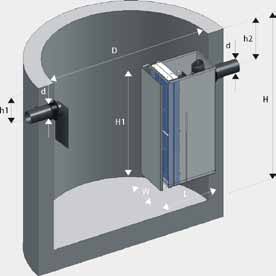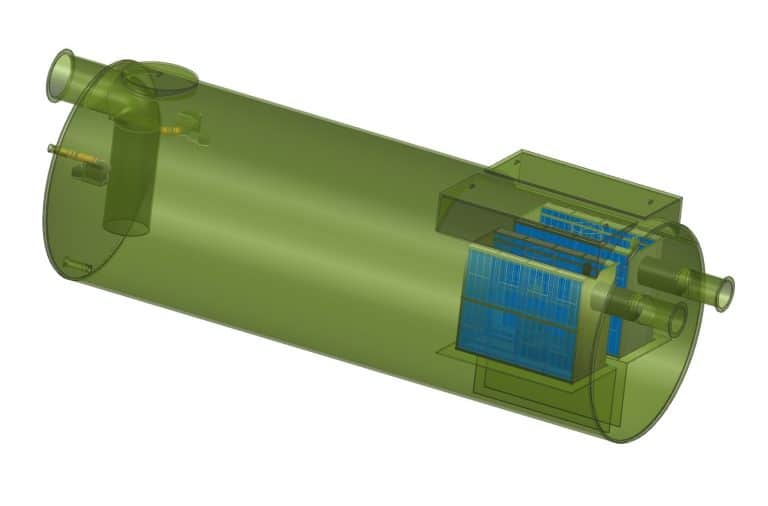Have you ever thought about how Maine businesses keep our waterways safe from oil spills? The secret is underground. Maine Below Ground Oil Water Separators are key to keeping our environment clean. They work hard to keep oil and water apart before they can harm our ecosystems.
In Maine, using these separators is not just smart; it’s often the law. They are crucial for keeping our water clean and meeting tough environmental rules. Many businesses, big and small, count on them to protect our water resources.
These separators are really effective. Some can remove oil from water at levels as low as 5 parts per million (PPM). This is way better than what’s allowed in North America. It helps businesses follow environmental laws and stay efficient at the same time.
Key Takeaways
- Freytech Inc. Maine Below Ground Oil Water Separators are essential for environmental protection
- These systems are a key part of stormwater management infrastructure
- Advanced separators can achieve oil separation efficiency of 5 PPM or better
- Proper use of separators helps businesses comply with environmental regulations
- Below ground oil water separators protect Maine’s waterways from oil contamination
Understanding Maine’s Regulations for Below Ground Oil Water Separators
Maine’s Department of Environmental Protection watches over Below Ground Oil Water Separators. These systems are key to keeping the environment safe. They must be installed and used correctly to follow state rules.
Department of Environmental Protection Guidelines
The DEP sees oil-water separators and catch basins as underground oil tanks. This means they are under tight rules. The department has clear guidelines for how to manage and keep these systems in good shape.
Registration and Construction Requirements
Owners of Below Ground Oil Water Separators must sign up with the state. The DEP has strict rules for building these systems. These rules help stop leaks and make sure they last a long time. They also protect our groundwater and soil from getting polluted.
Financial Assurance and Discharge Response
Maine makes owners of these separators put up financial guarantees. This makes sure money is ready for cleaning up spills. The state also demands quick action plans for any spills. These steps protect our environment and health from oil spills.
It’s vital for businesses in Maine to know and follow these rules. Staying in line with the law helps avoid fines and keeps our environment safe.
Types and Components of Below Ground Oil Water Separators
Below ground oil water separators are made to meet different needs in stormwater and wastewater systems. They are key in removing oil and pollutants from water before it gets into the environment.
Water Quality Inlets
Water quality inlets are special catch basins that catch sediment and stop debris from leaving. They have a deep sump for collecting coarse sediment and a hood to keep hydrocarbons in. These inlets need a 4-foot deep sump and regular cleaning to work well.
Oil/Grit and Oil/Water Separators
Oil/grit and oil/water separators have a two-chamber design for removing pollutants. The first chamber catches sediment, and the second targets hydrocarbons. These systems need a 400 cubic feet permanent pool storage per acre of drainage area to work best.
PRM Oil Water Separators
PRM oil water separators are great at separating fluids for various flow rates. They are made of stainless steel and have PVC coalescing media packs for better efficiency. PRM separators can handle flow rates from 1 to 100 GPM and can work alone or with other wastewater treatment equipment.
Maine Below Ground Oil Water Separators: Design and Functionality
Below ground oil water separators in Maine are key for managing stormwater and fighting pollution. They are made to high environmental standards and work well at separating oil from water.
These separators are built with stainless steel for lasting use. They have coalescing media packs to improve separation. This helps remove oils like motor oil, diesel, and gasoline from water.
Modern separators use advanced tech for top-notch separation. Some can remove as little as 5 parts per million of oil from water. This is way better than what’s allowed in North America. It’s very important for treating industrial wastewater.
Adjustable skimmers are a big part of these separators. They let you control how much oil is removed. This makes sure only clean water goes back into the environment. This is key in spill containment systems where quick oil removal is needed.
These separators do more than just separate oil and water. They protect our water resources and help meet environmental laws. By treating contaminated water, they help businesses and cities follow the rules and reduce their environmental harm.
Maintenance and Best Practices for Oil Water Separators
Keeping oil water separators in good shape is key for managing stormwater. Regular care makes sure these systems work well. This helps meet environmental standards.
Inspection Frequency
Check water quality inlets three to four times a year. Oil/grit separators should be inspected every six months. PRM Oil Water Separators need checks on coalescing media packs and skimmer adjustments.
Sediment Removal
Clear sediment from water quality inlets when it’s 6 inches below the hood. Clean oil/grit separators twice a year to stop materials from getting back into the water.
Cleaning and Disposal Procedures
Clean the sludge and grit chamber in PRM Oil Water Separators often. Dispose of oil-contaminated water and sediment as per Maine DEP guidelines. This keeps your equipment working right and up to code.
Stick to these maintenance steps to keep your stormwater systems running smoothly. Doing this keeps the environment safe and makes your oil water separators last longer.
These separators are crucial in storm water systems. They process runoff to meet the US EPA’s Clean Water Act standards. With effective oily water treatment, facilities protect the environment and dodge big fines.
Conclusion
Maine Below Ground Oil Water Separators are key for managing stormwater and protecting the environment. They are crucial for businesses wanting to follow state laws and keep water clean. By using these systems, companies can cut down on pollutants in their runoff. This helps protect Maine’s valuable water resources.
It’s important to know about the different types, design, and upkeep of these systems for them to work well. Regular checks, removing sediment, and cleaning are needed to keep them running efficiently. This helps businesses follow environmental laws and supports Maine’s ecosystems’ health.
As rules for environmental compliance change, new separator packages are setting higher standards for separating pollutants. These advanced systems are making it easier for businesses in Maine and elsewhere to have cleaner water releases. By choosing quality oil water separators and keeping them in good shape, companies show they care about the environment and sustainable practices.










